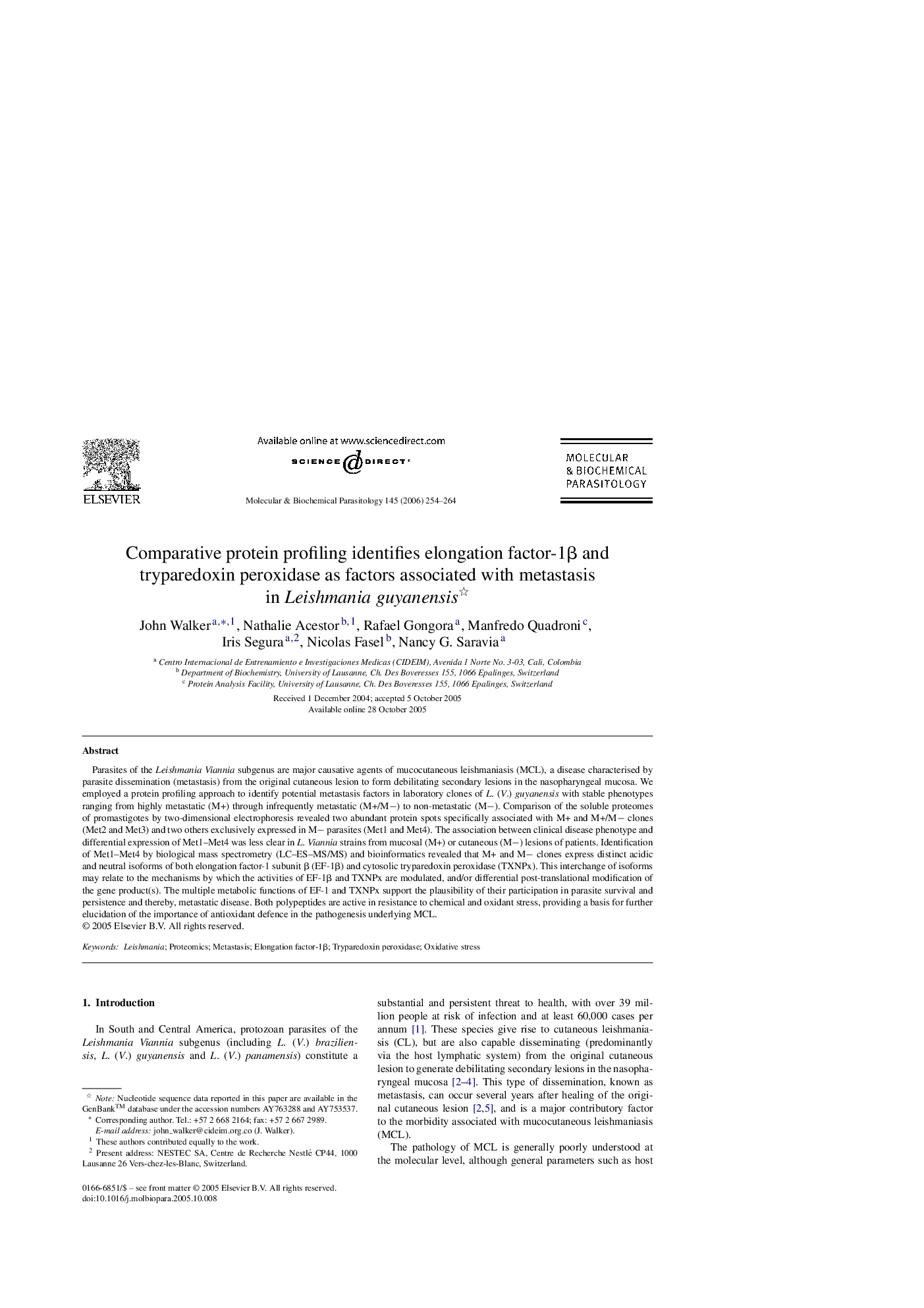| Article ID | Journal | Published Year | Pages | File Type |
|---|---|---|---|---|
| 2830451 | Molecular and Biochemical Parasitology | 2006 | 11 Pages |
Parasites of the Leishmania Viannia subgenus are major causative agents of mucocutaneous leishmaniasis (MCL), a disease characterised by parasite dissemination (metastasis) from the original cutaneous lesion to form debilitating secondary lesions in the nasopharyngeal mucosa. We employed a protein profiling approach to identify potential metastasis factors in laboratory clones of L. (V.) guyanensis with stable phenotypes ranging from highly metastatic (M+) through infrequently metastatic (M+/M−) to non-metastatic (M−). Comparison of the soluble proteomes of promastigotes by two-dimensional electrophoresis revealed two abundant protein spots specifically associated with M+ and M+/M− clones (Met2 and Met3) and two others exclusively expressed in M− parasites (Met1 and Met4). The association between clinical disease phenotype and differential expression of Met1–Met4 was less clear in L. Viannia strains from mucosal (M+) or cutaneous (M−) lesions of patients. Identification of Met1–Met4 by biological mass spectrometry (LC–ES–MS/MS) and bioinformatics revealed that M+ and M− clones express distinct acidic and neutral isoforms of both elongation factor-1 subunit β (EF-1β) and cytosolic tryparedoxin peroxidase (TXNPx). This interchange of isoforms may relate to the mechanisms by which the activities of EF-1β and TXNPx are modulated, and/or differential post-translational modification of the gene product(s). The multiple metabolic functions of EF-1 and TXNPx support the plausibility of their participation in parasite survival and persistence and thereby, metastatic disease. Both polypeptides are active in resistance to chemical and oxidant stress, providing a basis for further elucidation of the importance of antioxidant defence in the pathogenesis underlying MCL.
